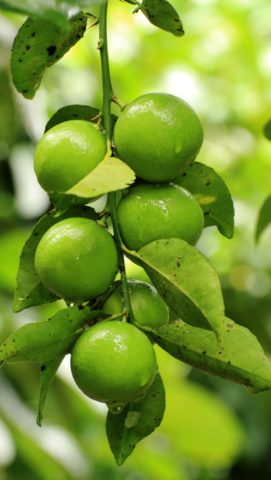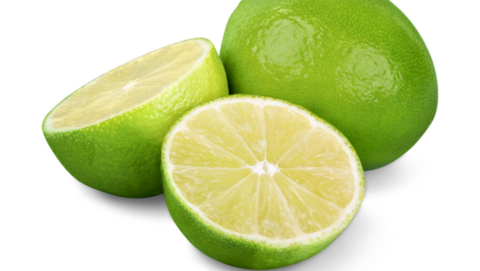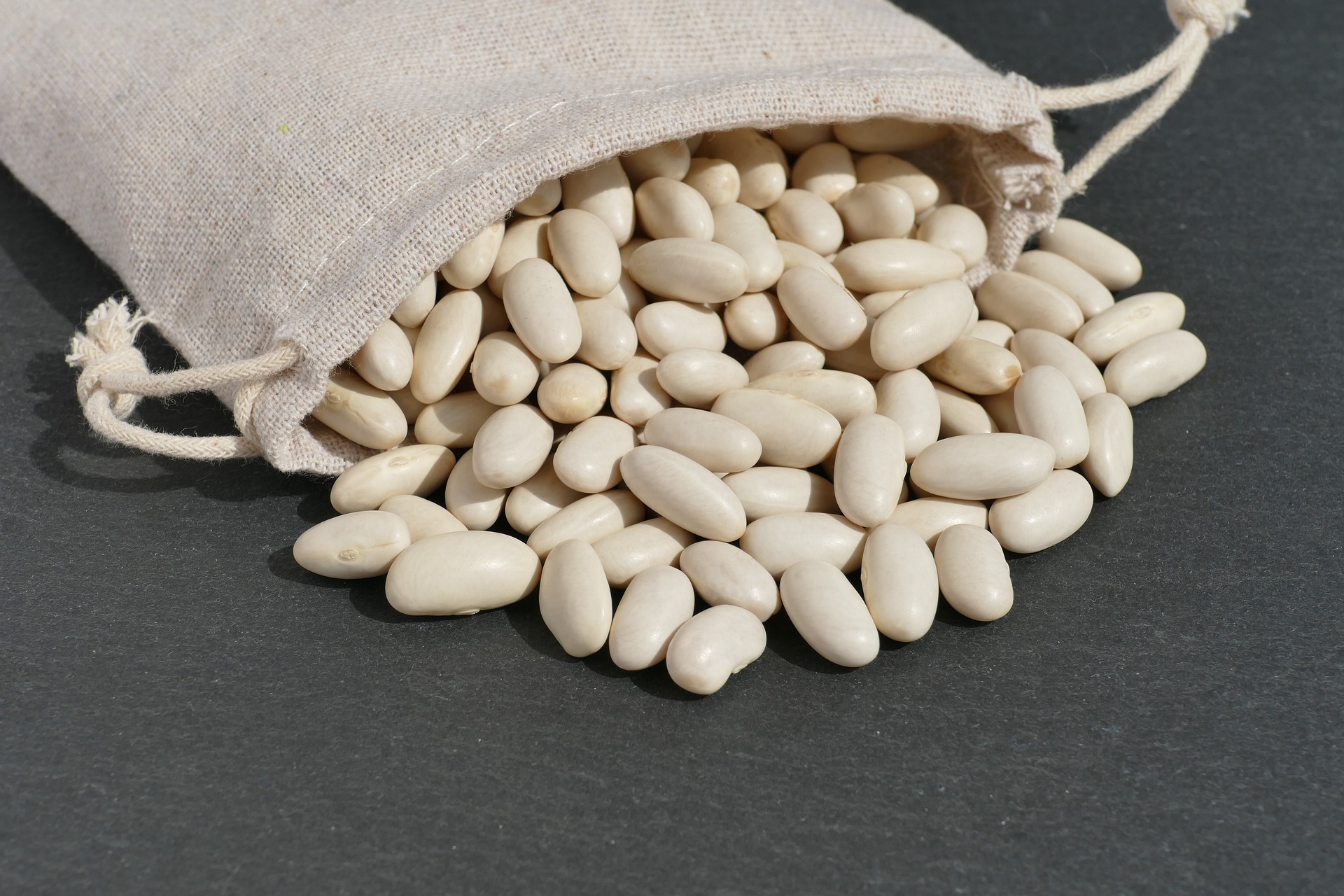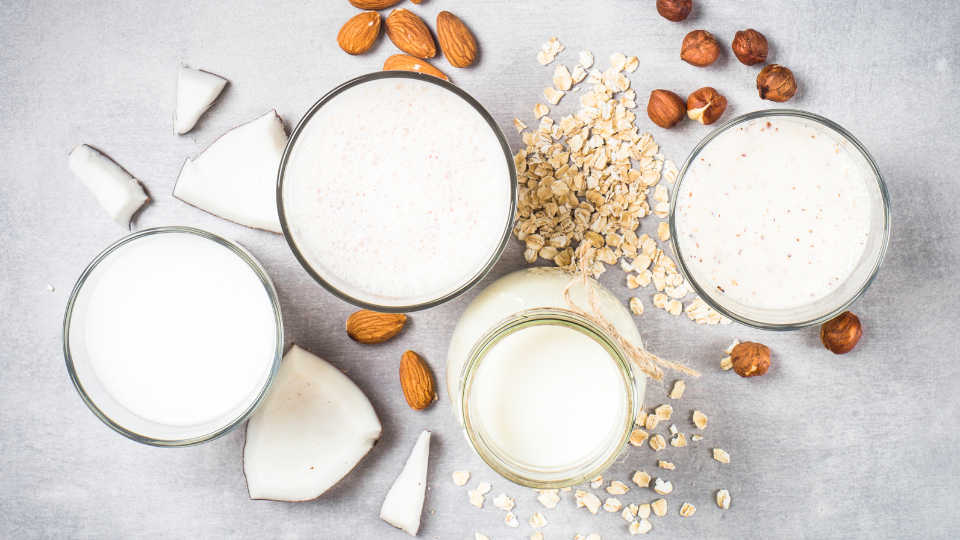Fruit and Vegetable Guide Series: Limes

Availability: Limes are available year-round in most supermarkets, with peak season between June and August.
Eating: Limes can be used in a variety of foods. Like many citrus fruits both the juice and zest of the fruit can be used. Limes are also great in many baking or grilling dishes. The taste of a lime is refreshing especially during a hot summer day.
Selecting: There are two types of limes. Tahitian limes are greenish yellow when fully mature. Key limes are smaller and have a higher acid content. A good juicy lime will be more squishy than hard. Select limes that are glossy and light to deep green in color.
higher acid content. A good juicy lime will be more squishy than hard. Select limes that are glossy and light to deep green in color.
Limes should have a thin, smooth skin and be heavy for their size. Small brown areas on the skin should not affect flavor, but large blemishes or soft spots indicate a damaged lime. Avoid limes that have a yellowish skin or are too small. A hard, shriveled skin is a sign of dryness, as is a coarse thick skin. Avoid those that are browning or hard to the touch.
Cleaning and Preparing: Gently rinse limes with water before cutting or peeling, even if you are just using the juice.
Storing: To yield more juice, store limes at room temperature and out of the sun for up to 1 week. Storing in direct sunlight will cause limes to shrivel and discolor. Limes may also be stored in the refrigerator for up to 4 weeks. Limes store better if placed in a plastic bag in the refrigerator.
Cooking: Limes, like lemons, can be used in a variety of dishes as a flavoring. Freshly squeezed
lime juice is great in fresh salsas, in marinades for meat and vegetables, in salads and drinks and in many more foods. Limes are usually used raw, but may be included in baked or grilled dishes. Many recipes call for fresh lime juice. To juice by hand, roll the lime on a firm surface before squeezing out the juice.

- Garnish: Simply slice the lime in half and slice into several sections. Limes can be a salt substitute and will add a tangy flavor.
- Beverage: Take four medium-sized limes and freshly squeeze them. Add one cup of sugar and two quarts of water. Try combining lime juice with other juices. Lime blends well with other flavors, such as strawberry, raspberry, orange and even cucumber. Flavors are best when juice sits for a few hours or overnight before drinking.
- Lime zest: The zest of lime can be used to intensify the flavor of your dish. When getting the zest from any citrus fruit, be careful not to get part of the white pith beneath, as the pith is bitter.
Nutrition: Limes are a great source of vitamin C. Vitamin C helps with growth and healing of tissue, heals cuts and wounds and keeps gums healthy.
Preserving Limes: Limes can be frozen to extend usage. To freeze limes, wash, peel and divide fruit into sections, removing membranes and seeds. In a saucepan, combine 2 ¾ cups sugar and 4 cups water, mix until solution is clear, and bring to a boil. Cool the syrup and pour over limes. Place limes and syrup in covered airtight containers or heavy-duty freezer bags. Whole limes can also be frozen in freezer bags, but will be mushy when thawed. They can, however, be successfully used for juice. Limes can be stored in the freezer for up to 4 months.
References
Melanie Jewkes, Extension Professor
Guide Editors: Heidi LeBlanc and Debra Christofferson
Additional Editors: Marie Stosich, Gayla Johnson, Eileen Milligan, Kiersten Holmgren, Jenna Dyckman
*This publication is a part of a series created by Create Better Health and Utah State Extension Employees. It has been reviewed and updated to include current evidence-based research and recommendations.
Related Nutrition Articles






